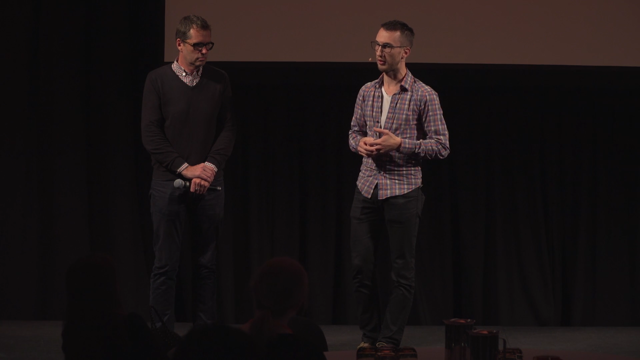- [Female] Hey, great talk, thank you.
I'm just curious with the-- I love the idea of a (mumbles) sign, and I was wondering if that forced you to refactor all the margins around those headings? Like, did that mean that you had to go through all your code bases and work out how things hit above and below those headers? - Yeah, so we-- great question.
We wouldn't have revisited existing pages and applied this holistically across the board.
Some have had the benefit of rebuilding and having this in there from the start, while others have taken more the Leafnote approach, where you build something new on a page and that's perfectly on grid while everything else around it's probably a bit more Legacy. But yeah, certainly it's meant leaving the rhythm of everything to the text and then anything else around it, if it's inside a card or it's inside a list item or something like that, everything from that point on is specified as grid rows rather than specific pixel values. So once you've corrected the text, you'll find any additional spacing can just be specified in rows and it's much more fluid to compose.
- Did you ever-- I mean, you know, some of us have been advocating the death of pixels for many years. But they die a hard death.
(laughing) Internally, did you find, like, from the more design perspective, the teams who are more design-oriented people just think in pixels? It's just their default way of imagining how you lay things out, and was there a challenge in kind of changing that thinking? - Definitely, and we're still wrestling with that in some respects now.
Some designers are more technically minded than others, and can actually answer the why that allows you to (mumbles) to find solutions, whereas others are more-- I suppose a bit more traditional and passionate, just like painting pictures.
And so, unpacking the why has been quite a difficult journey to go on, but having seen the power of the system and the fact that a designer cannot be present, come back to a machine and see that the product that's being built exactly matches their intent, I think has kind of forced the adoption a little bit more, because the proof's in the pudding, so to speak.
So does that answer your question? - Yeah, no, I think it's very interesting.
I mean, sometimes, especially-- I guess those of us work, kind of, very much on the web and have for many years. We sort of, I think, we kind of-- pixels have somewhat faded into the background, and I think Mike's presentation a little bit later will probably talk to that. But when I see these things, they come out, I-- "Well yeah, that's right, in the real world, where most "people live, yes, pixels are an important part of that," and, you know, and all the baggage that come with it. So I was interested to see whether there was quite a lot of-- what the work was to move some of that thinking. - Yeah, well I think one of the biggest justifications, we've had a dedicated mobile website that we're deprecating in favour of responsive, obviously, and that's happening over the course of the next few weeks, is we've been able to introduce responsive type and done that in such a centralised way and not needed to look at the implementation detail because it's all under the cover of the components that we're using, so that's been really interesting journey, I should say, rather than taking more of a fluid type angle that you'll see later on, taking more principled approach and having it a bit more rigid, but structured across all the different device sizes. - All right.
I think there's a lot more there, so please find Michael. We'll have him over at the lounge a bit later. You can come and have a chat to him.
But in the meantime-- - Thank you.
- Please, once again, thank you, Michael, for sharing. (applause) (techno music)

